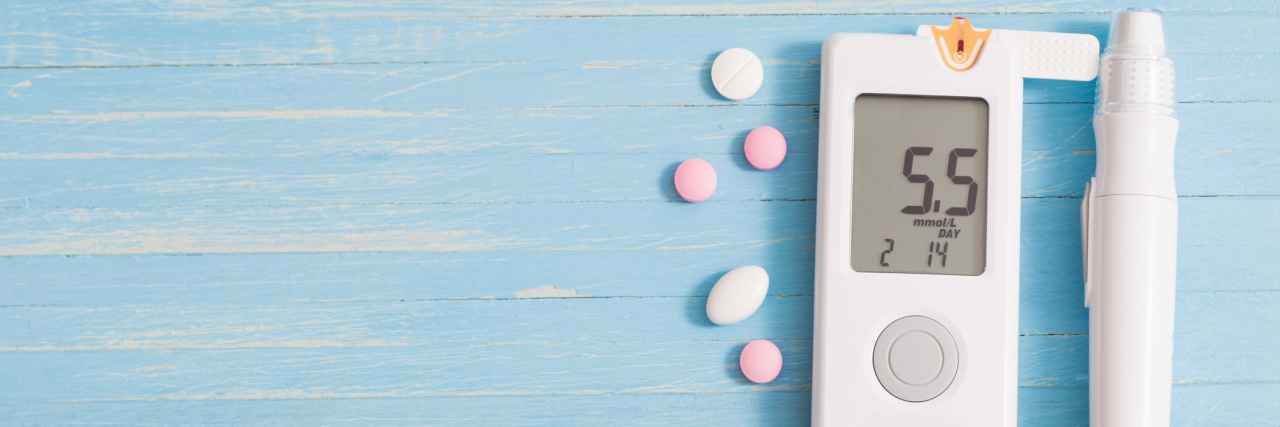In the absence of any drugs specifically created to treat type 1 diabetes, people living with the condition manage their health with insulin injections and diet modifications. However, two drugs, Zynquista (sotogliflozin) and Forxiga (dapagliflozin), are now on a quest to be the first approved oral treatment of type 1 diabetes, with varying levels of success.
On Friday, the U.S. Food and Drug Administration (FDA) announced Zynquista would not be approved.
Zynquista is what’s known as a sodium-glucose cotransporter 1 and 2 (SGLT-1/2) inhibitor. It works by inhibiting two proteins that regulate glucose. Inhibiting one of the proteins delays the absorption of glucose in the intestine, which helps control blood sugar levels after meals. Inhibiting the second protein prevents re-absorption of glucose in the kidney. This results in the loss of glucose through the urine, rather than in the blood.
Zynquista wouldn’t replace insulin but would be used alongside it. Studies found that taking sotagliflozan tablets helped people have fewer severe hypoglycemia episodes, require lower insulin doses and reach their target A1C level. An elevated risk of diabetic ketoacidosis was also discovered, as well as possible side effects including vaginal yeast infection and diarrhea.
Though Zynquista was not approved for use in the U.S., it is still under review in Europe, and according to the nonprofit Beyond Type 1, it is more likely to be approved there than in the U.S. since reviews in Europe have been more positive.
Forxiga (dapagliflozin) was approved to treat type 1 diabetes in Europe on Monday. Known as Farxiga in the U.S., the drug is an SLGT-2 inhibitor already used to treat type 2 diabetes. The FDA is currently reviewing Farxiga as a type 1 diabetes drug.
Like Zynquista, Farxiga does not replace insulin but is used alongside it. Studies showed it can help contribute to lower HbA1c levels, weight loss, and lower daily insulin requirements. The drug has been approved specifically for people with a body mass index (BMI) over 27 who aren’t meeting their blood sugar targets on insulin alone.
Farxiga and other SLGT2 inhibitors already on the market like Jardiance and Invokana have not, until now, been FDA-approved to treat type 1 diabetes as well as type 2 diabetes. However, some doctors already prescribe SGLT2 inhibitors to their patients with type 1 diabetes anyway.
Type 1 diabetes is a chronic autoimmune disease in which the body attacks the cells that produce insulin. As a result, people with type 1 diabetes cannot produce insulin to convert glucose (sugar) into energy. The condition is managed by closely monitoring blood sugar levels and injecting insulin, which requires constant calculations and adjustments. Having too much or too little insulin in the body can result in severe side effects and even death.
For people with type 1 diabetes, life requires constant monitoring, math equations, food choices, and keeping track of the various supplies needed for taking insulin. As Mighty contributor Noelle Wands described, it’s like studying for a huge exam that never ends.
You may spend weeks or months preparing for this exam, taking classes, talking to people who’ve been in your same shoes, asking for advice on the best way to tackle a particular problem. I do the same. I talk to my doctors, diabetic community, friends, asking all sorts of questions. Except I don’t take an exam. It doesn’t end for me. For you, once it’s over, studying is the last thing on your mind. However, in my case, there is no exam; the end goal is just a fleeting number that is too easily manipulated by outside factors and stressors. It can feel as though I have to keep up a sprint-worthy pace to a finish line that may never come.
For support and guidance about living with type 1 diabetes, check out these articles by people who have been there:
Diabetes Download: How Can I Decrease the Cost of My Medication?
Getty photo by Maya23K

